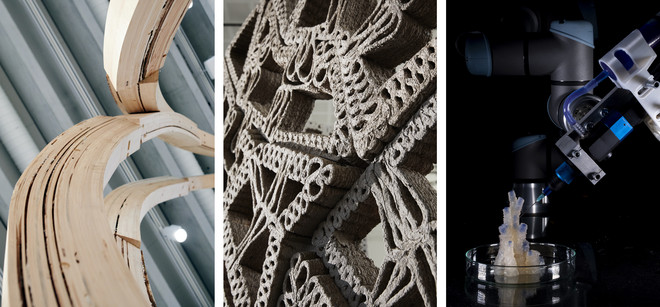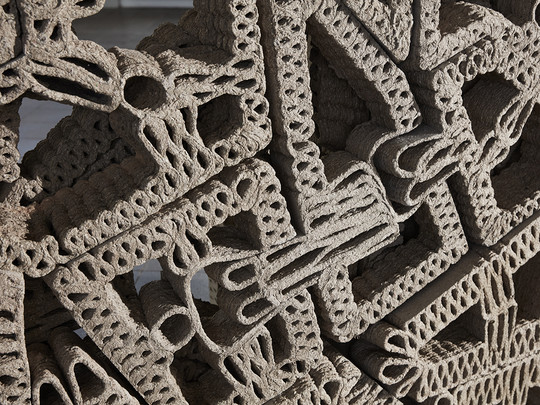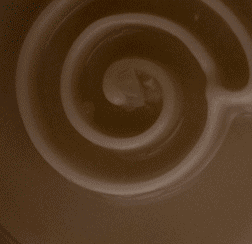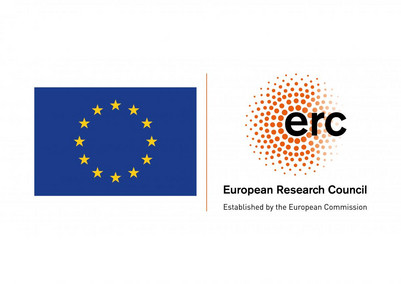
Eco-Metabolistic Architecture

In April 2021, the European Research Council granted DKK 18 million. DKK for a new project on biogenic materials in construction. The project is 5 years old, led by Mette Ramsgaard Thomsen, professor at the Center for IT and Architecture (CITA), and builds a holistic model for biogenic materials through three perspectives; the harvested, the composite and the living.
‘Eco-Metabolistic Architecture’ examines the foundations of a bio-based material paradigm for architecture. It argues that moving from a current reliance on the non-renewable materials of the geosphere, to the renewable and fundamentally cyclical materials of the biosphere can establish foundations for thinking alternative sustainable building practices. By positioning architecture and the built environment as a particular case for bio-based materials, where the long lifespans of buildings support carbon storage, this project identifies the bottlenecks that limit their adaptation into the way architecture is thought, designed and built. Architectural design is traditionally understood through the durable and the permanent. This project aims to challenge this foundation and bring forth the fundamental differences that bio-based materials engender. With focus on the embedded lifespans of living materials, the fundamental circularity and degradability of biomass and resulting transformative life cycles of the artefacts that they embody, this project proposes a holistic conceptualisation of architecture as an organism built out of living materials.
The project defines three objectives that rethink how we represent, fabricate and live in a bio-based architecture by:
1. Providing the conceptual framework for a new set of representations that capture, design and steer the heterogeneity, temporal plasticity and living performances of bio-based materials.
2. Developing models of adaptive fabrication to shape new material practices that address and control the dynamic properties of bio-based materials.
3. Proposing future practices of participatory continual construction in which inhabitants are seen as being part of cycles of construction through processes of reinforcing, maintaining or directly nurturing a bio-based architecture.
Fig 2: The three material perspectives in Eco-Metabolistic Framework for Sustainable Architecture: from the macro scale of timber construction, the meso scale of the enclosure and the micro scale of bacteria. Pre-projects by CITA, 2019 – 2021.
By connecting bio-based material thinking to advanced computational modelling and fabrication it empowers the instrumentation of otherwise suppressed properties of bio-based materials; their embedded heterogeneity, complex dynamic behaviours and environmental responsiveness.

The project does so through three material perspectives:
- The harvested:
The practices of building with timber, bamboo, reeds or straw are cemented parts of building history. This project explores industrialised processes for fabricating free-form glulam structural beams as a case for understanding how data rich practices can challenge current practices of material grading. It examines how a unified framework can address the existing knowledge gap to break the standardised understanding of timber resource by 1) prototyping the interfaces by which material information in the form of CT data describing the cellular structure of each individual timber part, can be interfaced with design intent, 2) developing ways in which we can orchestrate these together into locally-graded stiffness-variable glulam elements and 3) proposing participatory practices of continual reinforcement to replace current conventions of over-dimensioning.

- The designed:
Bio-polymers, made from biomass such as starch, cellulose, gums or microorganisms, are currently attracting attention as ecologically sound alternatives to petroleum-based polymers. This project investigates how the robotic extrusion of slurry-based bio-polymers can be controlled to grade both localised material geometry and composition in response to design criteria. It addresses the existing knowledge gap by 1) developing design integrated steering mechanisms that combine geometry and material composition to steer performance and lifespan, 2) interfacing monitoring data to predict and control temporal plasticity and 3) ideating new practices of participatory continual construction tuned to material lifespans.

- The living:
The emergence of new bio-technology platforms is innovating material thinking to include living organisms. This project examines the use of bioluminescent bacteria as architectural light source. it prototypes new methods for representing and instrumentalising living bacteria as an architectural material by 1) predicting the life cycles and performances of bioluminescent bacterial organisms, 2) interfacing with robotic fabrication for controlled forming of habitats and 3) proposing participatory practices of nurturing and maintaining a living architecture.
This project has received funding from the European Research Council (ERC) under the European Union’s Horizon 2020 research and innovation programme (Grant agreement No.101019693)














